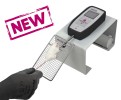Authors
JE Shin, SJ Park, SI Ahn, SY
Lab
College of Pharmacy, Kyung Hee University, Seoul, Korea
Journal
Nutrients
Abstract
Sarcopenia, a loss of skeletal muscle mass and function, is prevalent in older people and associated with functional decline and mortality. Protein supplementation is necessary to maintain skeletal muscle mass and whey protein hydrolysates have the best nutrient quality among food proteins. In the first study, C57BL/6 mice were subjected to immobilization for 1 week to induce muscle atrophy. Then, mice were administered with four different whey protein hydrolysates for 2 weeks with continuous immobilization. Among them, soluble whey protein hydrolysate (WP-S) had the greatest increase in grip strength, muscle weight, and cross-sectional area of muscle fiber than other whey protein hydrolysates. To investigate the molecular mechanism, we conducted another experiment with the same experimental design. WP-S significantly promoted the phosphoinositide 3-kinase (PI3K)/protein kinase B (Akt)/mammalian target of rapamycin (mTOR) pathway and inhibited the PI3K/Akt/forkhead box O (FoxO) pathway. In addition, it increased myosin heavy chain (MyHC) expression in both the soleus and quadriceps and changed MyHC isoform expressions. In conclusion, WP-S attenuated muscle atrophy induced by immobilization by enhancing the net protein content regulating muscle protein synthesis and degradation. Thus, it is a necessary and probable candidate for developing functional food to prevent sarcopenia.
BIOSEB Instruments Used:
Grip strength test (BIO-GS3)

 Douleur - Allodynie/Hyperalgésie Thermique
Douleur - Allodynie/Hyperalgésie Thermique Douleur - Spontanée - Déficit de Posture
Douleur - Spontanée - Déficit de Posture Douleur - Allodynie/Hyperalgésie Mécanique
Douleur - Allodynie/Hyperalgésie Mécanique Apprentissage/Mémoire - Attention - Addiction
Apprentissage/Mémoire - Attention - Addiction Physiologie & Recherche Respiratoire
Physiologie & Recherche Respiratoire
 Douleur
Douleur Système Nerveux Central (SNC)
Système Nerveux Central (SNC)  Neurodégénérescence
Neurodégénérescence Système sensoriel
Système sensoriel Système moteur
Système moteur Troubles de l'humeur
Troubles de l'humeur Autres pathologies
Autres pathologies Système musculaire
Système musculaire Articulations
Articulations Métabolisme
Métabolisme Thématiques transversales
Thématiques transversales SFN2024: Venez rencontrer notre équipe sur le stand 876 à Chicago
SFN2024: Venez rencontrer notre équipe sur le stand 876 à Chicago 